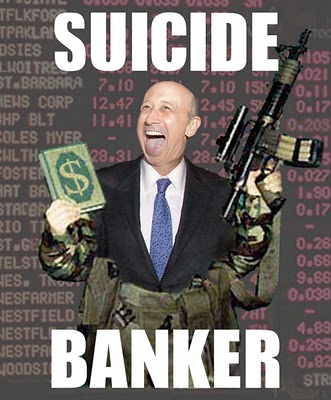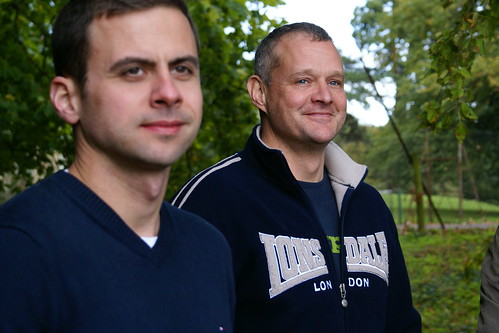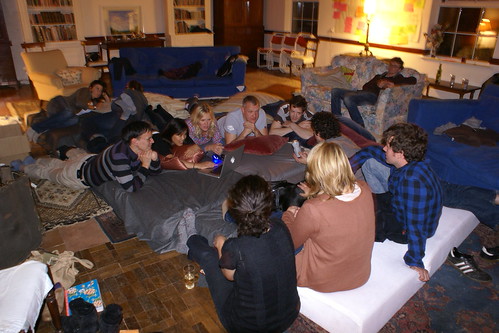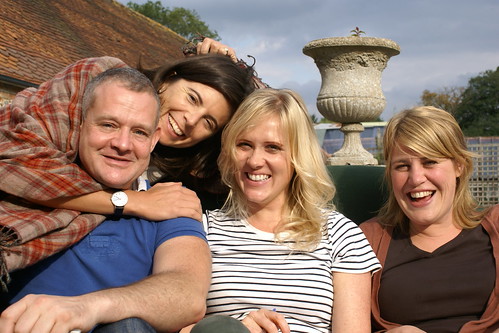Several hundred years back, the
City of London was protected by a great stone wall, and access was controlled
via several key gates.
Aldersgate was in the north, Ludgate was to the west, Aldgate was in the east,
and on the south end of London Bridge there was Bridge Gate. Later, others were
added, like Bishopsgate, Moorgate, Cripplegate, and Newgate. Nowadays, the
physical wall and gates have slipped out of popular memory. To many modern
commuters into the City, the Moorgate is nothing but a station on the Northern
Line of the London Underground.
Recently, a wing of the Occupy movement set up camp just up the
road from Moorgate, in Finsbury Square. Another wing set up in an old building
in Sun Street. Like the
original St. Paul’s Camp, the new camps seem like incongruous outposts amidst the
black sheet glass and metal frames of buildings housing financial giants. The
protesters have managed to take temporary control of small areas of physical
space, and yet, do they really have true access
to the City?
It seems to me that the walls of
the City are still there, only nowadays you can’t see them. They exist in codes
and institutions, cultures and hidden
political forces, architectural styles and subtle symbols whispering you don't belong here. Finding ways of
passing these hidden gates is a great and worthwhile challenge. Before that can be done though, it's good to get a sense of the ancient boundaries of the City. That's why I've been recently visiting the border dragons.
 |
| TAKE ME TO YOUR LEADER |
So where are the others found? The
largest border dragon is found at the Temple Bar on Fleet Street, perched by
the Royal Courts of Justice like a nazgul from the Lord of the Rings. There are
two smaller ones keeping watch in the street next to Chancery Lane tube station
on High Holborn. See if you can find the others. There’s one lurking somewhere
on Goswell Road in the north, and one next to the Broadgate complex. There's one around Moorgate, and another
guarding the area before the Tower of London, somewhere on Byward street.
My favourite border dragons
though, are on the Victoria Embankment by Temple Place. They’re slightly larger
than most of the dragons, and strangely enough, they used to reside above the entrance
to the London Coal Exchange which was demolished in 1963. Word on the
street is that they took off and flew into the night, landing on Victoria
Embankment two years later.
Some have suggested that the
dragons are creatures from mystical treasure
islands known as offshore tax havens. Indeed, the
City is at the centre of a giant web of such havens, a beating financial heart
drawing in money from the opaque offshore jurisdictions and pumping it back out
to them again, keeping a global system of secrecy alive. The vast majority of
hedge funds and SPVs
for example, are incorporated in places like the Cayman Islands, even though
they’re managed from offices within London and the US. It poses something of a
headache for tax authorities, and also places something of a burden on the broader
society which does not have access to the offshore realms. Indeed, it's an open question as to how much of the City of London is even in London, and how much is situated within excel spreadsheets on computers in Bermuda and the British Virgin Islands.
 |
| I COME IN PEACE |
Certainly the City incorporates a
lot more physical space than meets the eye. It’s like that scene in The Lion,
the Witch, and the Wardrobe where the door to Narnia is found. Hidden
doors abound in the City, and they lead to parallel universes on Caribbean
Shores and Swiss Cantons.
So where does this leave access? I'm not sure. The border dragons mark the ostensible borders of the City, but the true borders are scattered and
fragmented by a world of shell companies and registered addresses. And we haven't even got into the cultural and political boundaries yet. I guess we’ll have to work on this access issue a bit more in due course. I’ve had controversial
views on it before, and they need to be refined.
In the mean time, take some
photos of dragons. Put a funny hat on its head, or give it some bling accessories.
Please do send the photos on me. I’ll be sure to put them up.
































